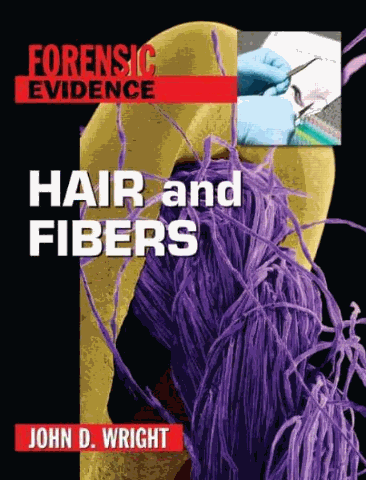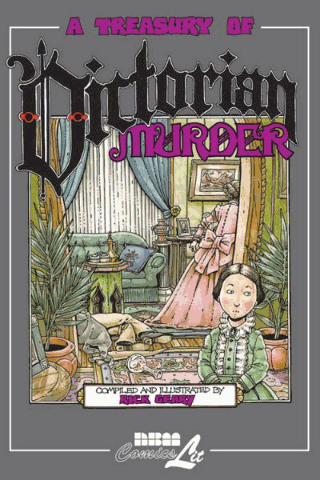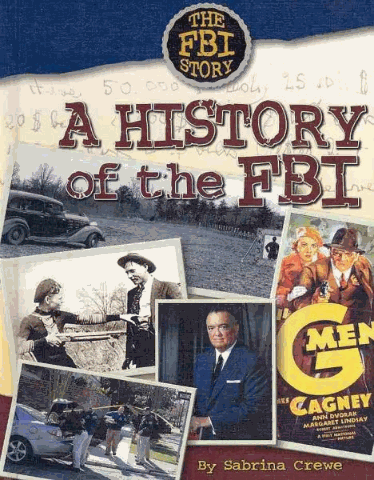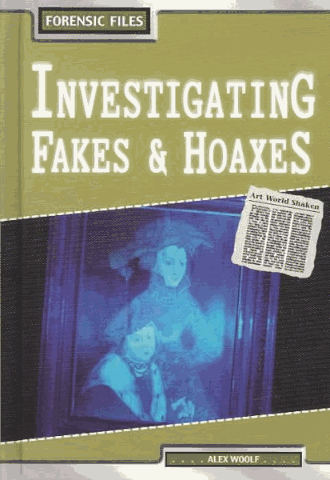Forensic Science
Examines forensic science and how it can be used to apprehend criminals by finding clues in rug fibers, the way a bone is broken, DNA "fingerprints," and more.
363.25
year: 1999
copies: 10
call number/section: 363.25
lexile:
Forensics
Presents an introduction to forensic science, explaining what it is, providing information on how it helps law enforcement solve difficult crimes, in the field and in the lab.
363.25
year: 2008
copies: 16
call number/section: 363.25
lexile: 1100
Dusted And Busted!
Presents a collection of real-life cases that were solved through the science of fingerprinting.
363.25
year: 2007
copies: 22
call number/section: 363.25
lexile: 660
Forensic Science
Describes several types of evidence that forensic scientists study in the investigation of crimes, including fingerprints, blood splatters, toxicology, hair strands, pieces of glass, and others; examines accident reconstruction; and discusses the impact technological advances in DNA and other areas have had on crime fighting.
363.25
year: 2006
copies: 3
call number/section: 363.25
lexile:
The Dna Gave It Away!
Examines how the technology of DNA is able to help law enforcement in the solving of different crimes.
363.25
year: 2008
copies: 8
call number/section: 363.25
lexile: 770
Hair And Fibers
Examines how forensic scientists gather and use hair and fiber evidence to investigate crimes and presents related case studies as well as key facts.
363.25
year: 2008
copies: 1
call number/section: 363.25
lexile:
Piggy
Lizzie struggles to overcome the closed, internal world of autism when a new girl moves into her neighborhood, befriends her, then insists that Lizzie join her in seeking revenge on the boys who tease them.
FIC
year: 2008
copies: 2
call number/section: FIC
lexile: 390
Opportunities In Forensic Science Careers
Provides an overview of the field of forensic science, with descriptions of the various settings in which forensic scientists work; features first-hand accounts from people working in the profession; and includes lists of related professional associations and training programs.
363.25
year: 2009
copies: 4
call number/section: 363.25
lexile:
A Treasury Of Victorian Murder
Collects three short graphic stories recounting tales of murder during the Victorian Age.
FIC
year: 1987
copies: 3
call number/section: FIC
lexile:
A History Of The Fbi
Discusses the creation, development, and growth of the Federal Bureau of Investigation from the era of gangsters and criminal networks through political scandals, civil rights conflicts, cyber crime, and terrorism in the twentieth and twenty-first century.
363.25
year: 2009
copies: 5
call number/section: 363.25
lexile:
subjects: criminal investigation [X]
Blood Evidence
Describes how blood analysis is used to solve crimes, including the tests performed by lab technicians on samples to determine blood type and other characteristics, and finding, saving and interpreting blood evidence.
363.25
year: 2004
copies: 15
call number/section: 363.25
lexile: 810
Courageous Crimefighters
Highlights the lives of seven famous detectives, including Allen Pinkerton, Eliot Ness, and Simon Wiesenthal.
920
year: 1995
copies: 4
call number/section: 920
lexile:
Major Unsolved Crimes
Presents a look at seven famous cases that remain unsolved despite the best efforts of crime investigators, including the disappearance of Jimmy Hoffa, the identity of the Zodiac serial killer, the death of Karen Silkwood, and others.
364.15
year: 2003
copies: 4
call number/section: 364.15
lexile:
Fingerprint Evidence
Describes the types and features of fingerprints and discusses the techniques used to take, develop, save, and compare fingerprints in order to solve crimes.
363.25
year: 2004
copies: 8
call number/section: 363.25
lexile:
Investigating Fakes & Hoaxes
Offers a brief history of forensic science and describes instances in which its techniques have been used to investigate various crimes, including murder, identity theft, and art forgery.
363.25
year: 2004
copies: 2
call number/section: 363.25
lexile:














